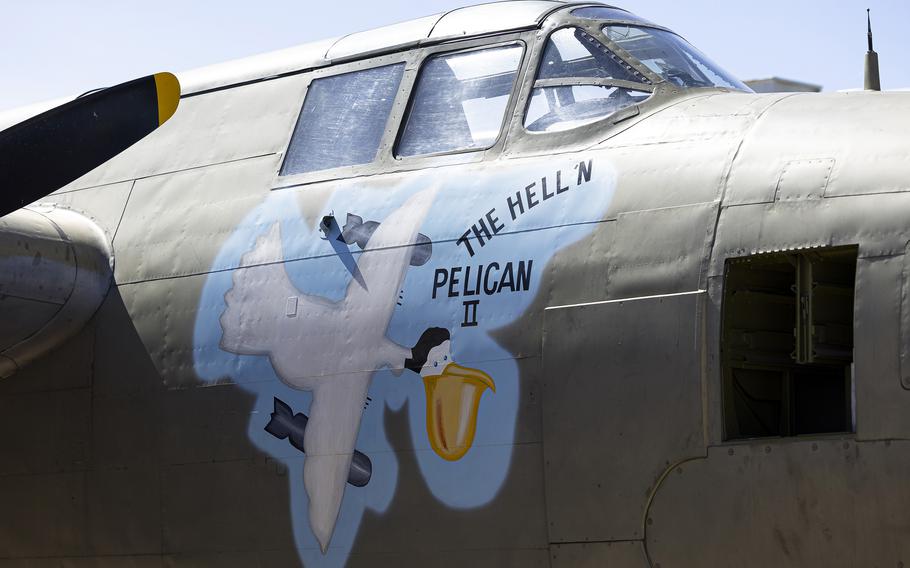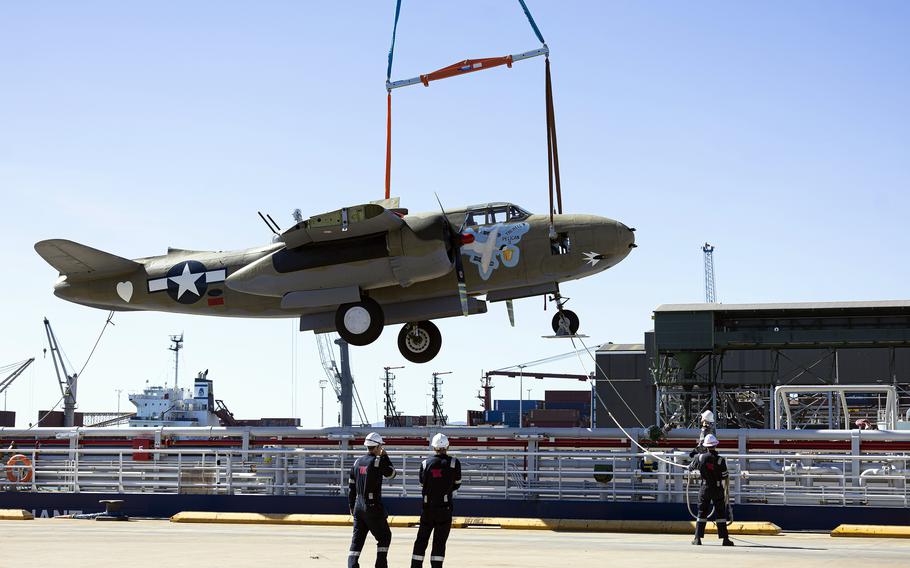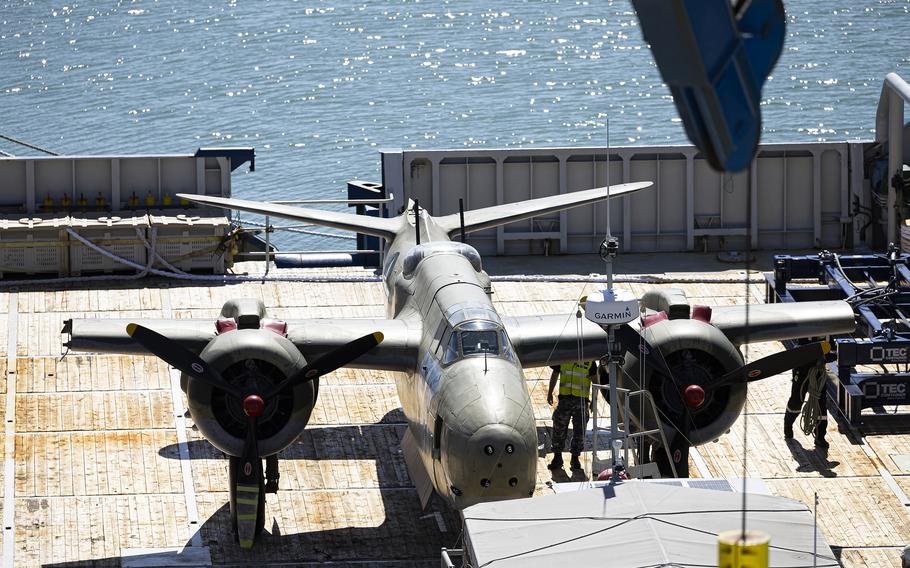
Crew members painted the Douglas A-20 Havoc bomber Hell’N Pelican II with an image of a pelican carrying a bomb. (Jessica Gray/Australian Defence )
An American bomber from World War II that sat hidden in Papua New Guinea’s jungle for decades will soon go on display at a museum in Port Moresby, the island nation’s capital, according to the Australian air force.
The Douglas A-20 Havoc, built in 1943 in Long Beach, Calif., was assigned to 5th Air Force during the war and crash-landed in the island’s interior after a combat mission the following year. Known as the Hell’N Pelican II, the aircraft was rediscovered in 1976 and has since undergone extensive restoration in Australia.
The bomber was shipped to Melbourne in 1943 before being flown to Papua New Guinea — then the Australian-administered Territory of New Guinea — according to information published June 6 on the Pacific Wrecks website. In March 1944, it arrived at Gusap Airfield, where it was assigned to 2nd Lt. Charles Davidson and Sgt. John McKenna.

The Douglas A-20 Havoc bomber Hell’N Pelican II is loaded onto the ADV Reliant in Townsville, Australia, June 5, 2025, for transport to the Papua New Guinea National Museum and Art Gallery. (Jessica Gray/Australian Defence )
Painted with nose art of a pelican carrying a bomb, the Hell’N Pelican II flew its first mission on March 29, 1944, striking Bunabun Harbor at low altitude, according to Pacific Wrecks. On April 16, the bomber participated in another low-level strike on Holladia — present-day Jayapura — before running low on fuel in poor weather and crash-landing near the village of Amalmon.
“During the landing the propellers were bent backward and the leading edge of the left wing was damaged when it impacted small trees,” the website states.
Behind enemy lines, Davidson and McKenna received airdropped supplies, including a radio and life raft, according to Pacific Wrecks. They evaded Japanese patrols and crocodiles for two weeks, eventually floating down the Gogol River to safety. They were rescued by the Australian ship HMAS Matafele and returned to Gusap Airfield.
Covered by vegetation, the bomber remained hidden until its discovery in 1976. Six years later, the Papua New Guinea government offered the Havoc and another airframe to the Australian air force for restoration, Squadron Leader Karyn Markwell, an Australian air force history and heritage spokeswoman, said by email June 5.

The Douglas A-20 Havoc bomber Hell’N Pelican II is loaded onto the ADV Reliant in Townsville, Australia, June 5, 2025, for transport to the Papua New Guinea National Museum and Art Gallery. (Jessica Gray/Australian Defence )
In 1984, a CH-47 Chinook airlifted the bomber to the HMAS Tarakan, a landing craft, which sailed it to Australia, Markwell said. Restoration efforts were carried out from 1985 to 1993 at bases in Richmond, Wagga and Amberly, using parts from other Havoc fuselages.
Although the restored aircraft was gifted to the Papua New Guinea National Museum and Art Gallery in 1996, it remained at Amberly’s aviation heritage center while a dedicated exhibit space was built.
The aircraft was recently disassembled and shipped back to Papua New Guinea aboard the ADV Reliant, Markwell said. It is scheduled to be unveiled at the museum’s new Aviation Heritage Hangar in time for the 50th anniversary of Papua New Guinea’s independence on Sept. 16.